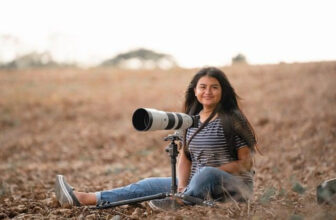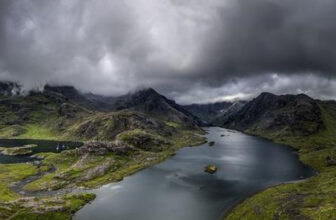Capturing Kids: Top Photography Tips
GoogleAds

In a world saturated with smartphone cameras and social media feeds, capturing memorable moments of children can be both exhilarating and challenging. Whether you’re a parent wanting to document your child’s milestones or a professional photographer looking to perfect your craft, mastering the art of child photography is a must. With the right techniques and equipment, you can immortalize the joy, innocence, and whimsy of childhood in a single frame. Join us as we delve into the top photography tips for capturing kids, and elevate your photography game to new heights.
Introduction: The Art of Photographing Children
Photographing children can be a delightful and rewarding experience, capturing their innocence and spontaneity before they grow up too fast. Whether you’re a parent wanting to document your child’s milestones or a professional photographer specializing in child portraits, there are key tips to keep in mind to ensure you get the best shots.
First and foremost, creating a comfortable and relaxed environment is crucial when photographing children. This means establishing a rapport with the child, talking to them, and making them feel at ease in front of the camera. Encouraging natural interactions and capturing genuine expressions will result in more authentic and heartwarming photos.
Another important tip is to get down to the child’s level when taking their picture. This perspective makes for more engaging and intimate shots, allowing you to capture the world from their point of view. Whether you’re kneeling, sitting, or lying on the ground, being at their eye level creates a connection that shines through in the final images.
Lighting is also a key factor in child photography. Natural light is often the best option, as it creates a soft and flattering glow that enhances the child’s features. When shooting indoors, position the child near a window or in a well-lit room to take advantage of natural light. Avoid harsh overhead lighting or direct sunlight, as it can create unflattering shadows and wash out the child’s features.
Incorporating props or toys can add an element of fun and playfulness to your child photoshoot. From balloons and bubbles to stuffed animals and costume accessories, props can help create a whimsical and magical atmosphere that delights both children and adults alike. Just be sure not to overwhelm the photo with too many props, as simplicity is often key in capturing the child’s essence.
Overall, the art of photographing children is a blend of patience, creativity, and spontaneity. By following these top photography tips and embracing the unique personalities of the children you photograph, you can create stunning and memorable images that will be cherished for years to come.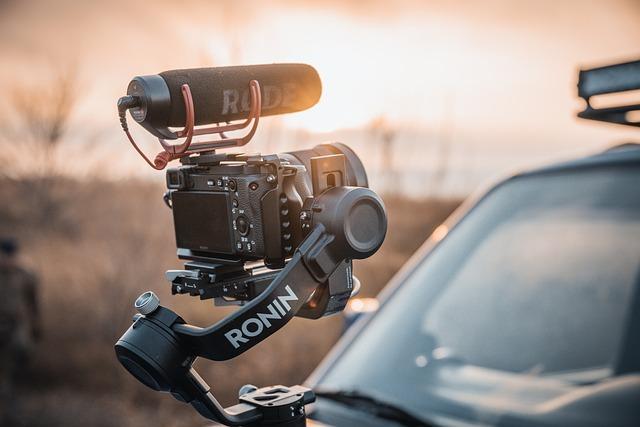
Equipment Essentials for Capturing Kids in Action
When it comes to capturing children in action, having the right equipment can make all the difference. Here are some essential tools to consider when photographing kids:
- Camera: Invest in a good quality camera that has fast autofocus capabilities to keep up with the movement of active kids.
- Lenses: A versatile zoom lens is ideal for capturing kids at play, allowing you to quickly adjust the focal length without changing lenses.
- Memory Cards: Make sure to have plenty of memory cards on hand to avoid running out of space when capturing those precious moments.
Lighting is key when photographing kids to ensure you get clear, well-lit shots. Here are some tips for using light effectively:
- Natural Light: Take advantage of natural light by shooting outdoors or near windows for soft, flattering illumination.
- Reflectors: Use reflectors to bounce light onto your subjects, filling in shadows and creating a more balanced composition.
| Tip | Description |
|---|---|
| Shoot at their level | Get down on the ground to capture kids at eye level for more engaging photos. |
| Capture candid moments | Avoid staged poses and instead focus on capturing genuine expressions and interactions. |
Another essential tool for photographing kids is patience. Children can be unpredictable, so be prepared to wait for the perfect moment to capture that priceless expression or action shot. Remember to have fun and be creative with your shots to truly capture the spirit of childhood in your photos.
Mastering Composition: Framing and Angles for Child Photography
When it comes to capturing the perfect shot of kids, mastering composition is key. Framing and angles play a crucial role in creating visually appealing photographs that truly capture the essence of childhood. Here are some top photography tips to help you elevate your child photography game:
Framing:
- Use natural frames such as doorways, windows, or tree branches to add depth and dimension to your shots.
- Experiment with different framing techniques like using a foreground element to draw attention to your subject.
- Don’t be afraid to get close and fill the frame with your subject to create intimacy and focus.
Angles:
- Get down to the child’s eye level to capture their world from their perspective.
- Try shooting from different angles such as high above or low to the ground for unique and interesting compositions.
- Use leading lines to guide the viewer’s eye through the photograph and create dynamic compositions.
Composition:
- Experiment with the rule of thirds to create balanced and visually appealing images.
- Pay attention to the background and remove any distractions that take away from the main subject.
- Include props or toys that reflect the child’s personality and interests to add a personal touch to your photos.
| Tip | Description |
|---|---|
| Lighting | Opt for soft, diffused natural light for flattering portraits. |
| Candid Moments | Capture genuine emotions and interactions for authentic photos. |
| Editing | Enhance your photos with subtle edits to bring out the best in your subjects. |
Utilizing Natural Light to Enhance Children’s Portraits
When it comes to capturing the essence of children in photography, utilizing natural light can make all the difference. Natural light has a soft, flattering effect that enhances the features of your young subjects. By mastering the art of working with natural light, you can create stunning portraits that truly capture the innocence and beauty of childhood.
One of the key tips for utilizing natural light in children’s portraits is to shoot during the golden hours. The golden hours occur during the first hour of sunrise and the last hour of sunset. During these times, the light is soft, warm, and directional, creating a magical glow that adds a special quality to your photos. Make sure to schedule your photo sessions during these times for the best results.
Another important aspect to consider when using natural light is the direction of the light. Backlighting, where the light source is behind the subject, can create a dreamy, ethereal effect. Side lighting, where the light comes from the side of the subject, can add depth and dimension to your photos. Experiment with different lighting angles to see what works best for each child portrait.
When shooting outdoors, you can also make use of natural reflectors to enhance the natural light. Surfaces like sand, water, or light-colored walls can bounce light back onto your subjects, filling in shadows and creating a more balanced exposure. Look for these natural reflectors and position your subjects accordingly to make the most of the available light.
In conclusion, mastering the art of utilizing natural light for children’s portraits can take your photography to the next level. By understanding the golden hours, playing with lighting directions, and using natural reflectors, you can create captivating images that truly showcase the beauty and innocence of childhood. So grab your camera, head outdoors, and let the natural light work its magic on your next kids’ photo shoot!

Building Rapport and Engaging with Young Subjects
When it comes to capturing kids in photographs, is crucial for getting the perfect shot. Whether you’re a professional photographer or just snapping pictures of your own children, these top photography tips will help you master the art of photographing kids.
1. Get down to their level: One of the best ways to engage with young subjects is to get on their eye level. This creates a more intimate and personal connection, allowing you to capture authentic moments and expressions.
2. Use props and toys: Kids love to play, so incorporating props and toys into your photoshoot can help keep them engaged and excited. Whether it’s a favorite stuffed animal or a fun hat, props can add a playful element to your photos.
3. Be patient and flexible: Working with kids can be unpredictable, so it’s important to be patient and flexible. Allow them to set the pace and mood of the photoshoot, and be ready to adapt to their needs and preferences.
4. Capture candid moments: Some of the best photos of kids are captured when they’re not posing or aware of the camera. Be ready to snap away during playtime or quiet moments, capturing genuine emotions and interactions.
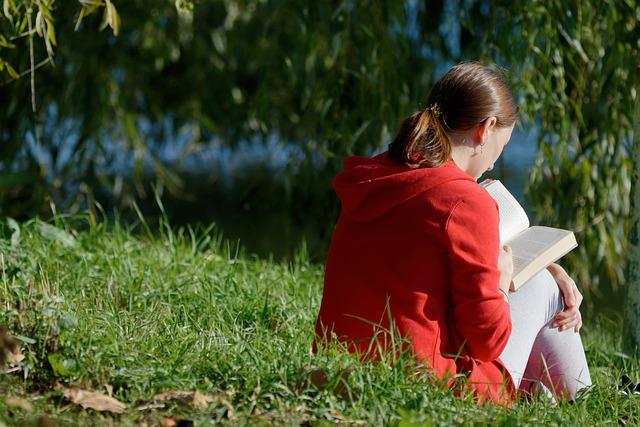
Candid vs. Posed: Finding the Perfect Balance in Children’s Photography
When it comes to photographing kids, finding the right balance between candid and posed shots is essential for capturing those genuine moments and emotions. As any parent knows, children are unpredictable and full of energy, making it challenging to get them to sit still for a perfect posed shot. On the other hand, candid shots can sometimes result in blurry or unflattering images. So how do you find the perfect balance?
One tip for achieving the perfect balance in children’s photography is to start with some posed shots to get those classic, beautiful portraits, then transition into capturing more candid moments as the session progresses. This way, you can ensure you have a mix of both styles to choose from. Remember, kids are most cooperative at the beginning of a photoshoot, so take advantage of this time to get those posed shots out of the way.
Another tip is to create a comfortable and fun environment for the children during the photoshoot. This could mean bringing along their favorite toys or snacks, playing their favorite music, or simply engaging them in conversation to help them relax and be themselves. When kids are comfortable and having fun, you’re more likely to capture those genuine smiles and expressions in your photos.
Experimenting with different angles and perspectives can also help you achieve the perfect balance in children’s photography. Get down on their level to capture their world from their point of view, or try shooting from above for a fresh and unique perspective. Don’t be afraid to get creative with your compositions and framing to add interest to your shots.
Lastly, don’t be afraid to embrace imperfection in children’s photography. Sometimes, those candid moments where a child is laughing, playing, or simply being themselves can result in the most beautiful and authentic photographs. So don’t stress too much about getting that perfect posed shot – sometimes, the imperfect moments are the ones you’ll treasure the most.
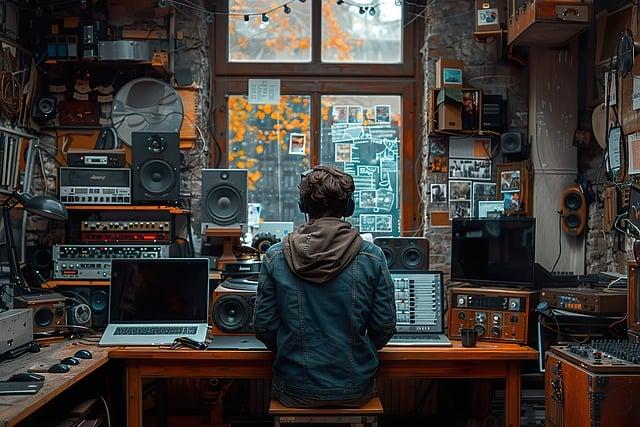
Edit Like a Pro: Post-Processing Tips for Kids’ Portraits
When it comes to capturing the essence of children through photography, there are a few key tips that can take your images to the next level. From lighting to composition, there are various elements to consider when photographing kids. In this post, we will focus on post-processing techniques that can enhance kids’ portraits and make them truly stand out.
One of the first steps in post-processing kids’ portraits is to adjust the exposure and white balance. This can help correct any lighting issues and ensure that the colors in the image appear true to life. Using software like Adobe Lightroom or Photoshop, you can easily make these adjustments with just a few clicks.
Another important aspect of post-processing kids’ portraits is retouching. Whether it’s removing blemishes, stray hairs, or adjusting skin tones, subtle retouching can make a big difference in the final image. Be careful not to overdo it, though, as you want to maintain the natural beauty of the child.
Adding a touch of creativity to your kids’ portraits can also set them apart. Consider experimenting with different filters, textures, or overlays to give your images a unique look. Don’t be afraid to play around with different editing techniques until you find a style that suits your vision.
Lastly, don’t forget to save your edited images in the appropriate file format and resolution for sharing or printing. Consider creating a separate folder for your kids’ portraits and organizing them by date or event. This will help you stay organized and easily access your favorite images in the future.
Q&A
Q: Why is photography so important for capturing moments with kids?
A: Photography allows us to freeze moments in time and create lasting memories with our children. Kids grow up quickly, and photographs help us preserve those special moments forever.
Q: What are some tips for taking great photos of kids?
A: One tip is to get down to the child’s eye level to capture more engaging and intimate photos. Additionally, using natural light and capturing candid moments can result in authentic and beautiful images.
Q: How can parents get their children to cooperate during a photo shoot?
A: Engaging children in the photo shoot by making it fun and exciting can help them cooperate. Incorporating their interests and favorite activities into the shoot can also encourage them to participate.
Q: What are some creative photography ideas for capturing kids?
A: One idea is to use props or incorporate elements of nature to add interest to the photos. Another creative approach is to experiment with different angles and perspectives to create unique and visually appealing images.
Q: How can parents improve their photography skills when capturing kids?
A: Practice is key to improving photography skills. Parents can experiment with different techniques, settings, and compositions to enhance their skills and capture better photos of their children. Additionally, seeking feedback from others and learning from professional photographers can also help improve their photography skills.
Future Outlook
In conclusion, capturing kids on camera can be a fun and rewarding experience for any photographer. By following these top photography tips, you can ensure that you are able to capture the true essence and spirit of children in your photographs. Remember to always be patient, engage with your subjects, and be prepared to capture those magical moments. With practice and dedication, you can master the art of photographing kids and create beautiful memories that will last a lifetime. Happy shooting!
GoogleAds




